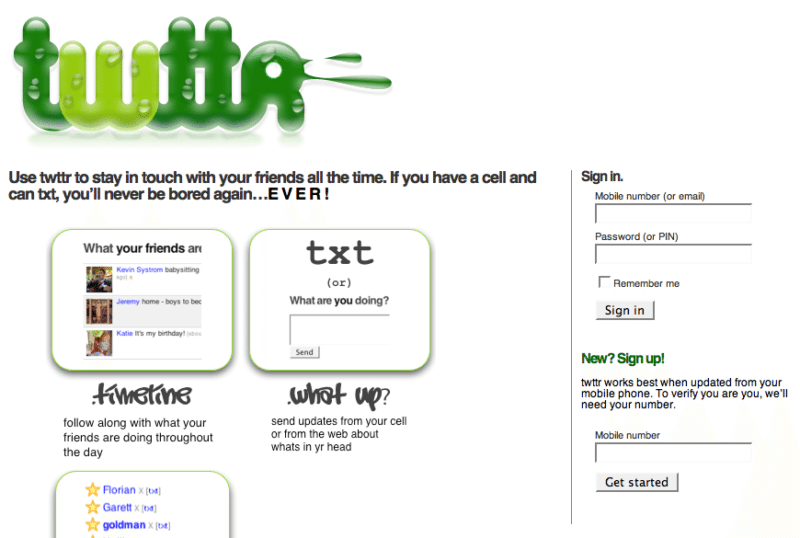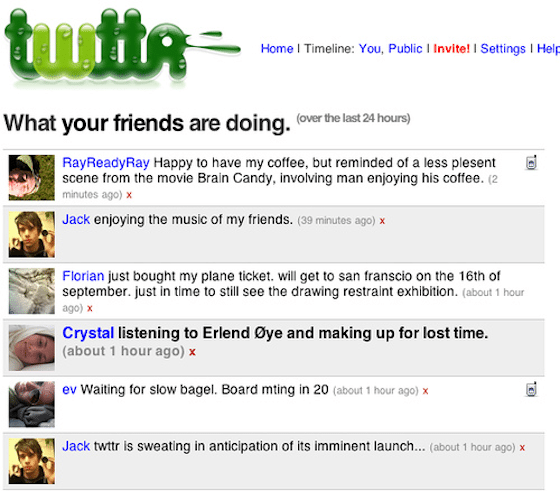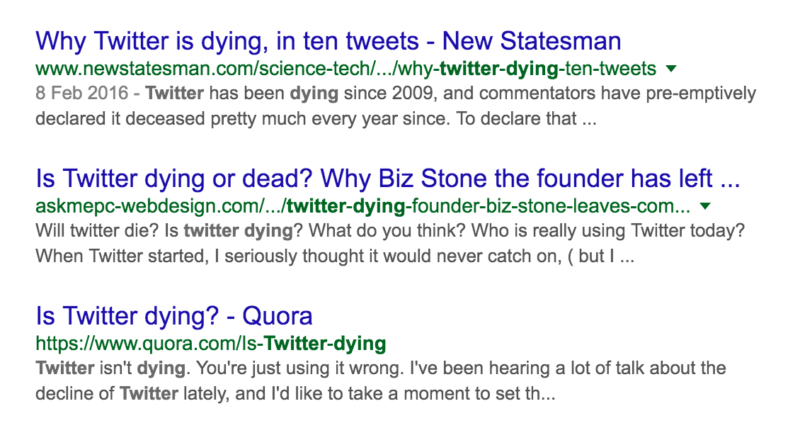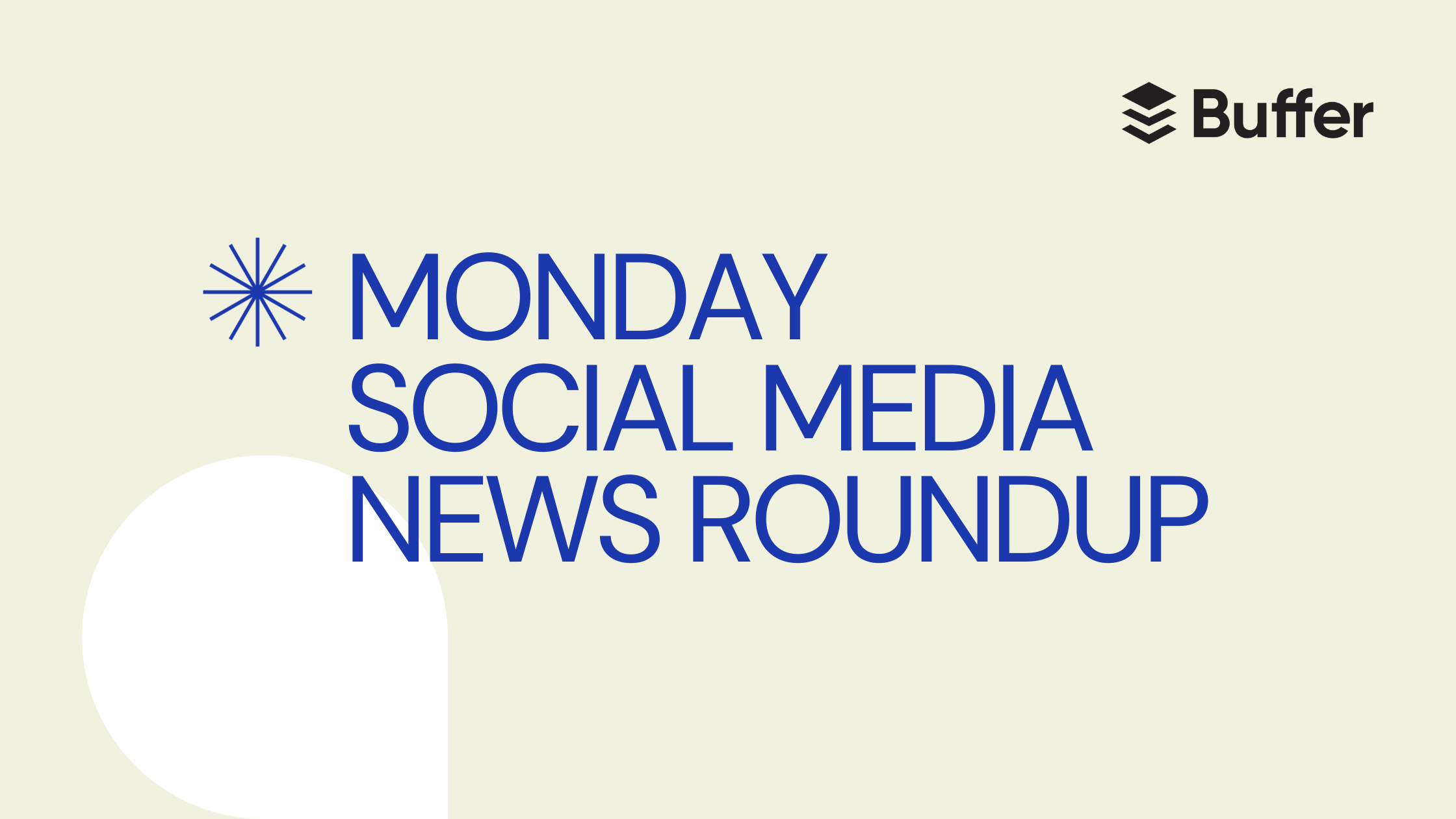
Twitter Turns 10: Reflections and Learnings from 10 Years of Twitter
Head of Content at Buffer
On March 21st, 2006, Jack Dorsey set up his twttr. What followed over the past 10 years, as Twitter has evolved has undoubtedly changed the way we communicate, and in some ways changed the world.
just setting up my twttr
— Jack (@jack) 21 March 2006
From the Hudson River plane crash, and Obama’s four more years to #BlackLivesMatter and JeSuisCharlie. The most important, world-changing moments have often unfolded on Twitter, in real-time for all to see, react to and engage with.
As Twitter began to roll out its 10th Birthday celebrations around the globe, I was caught in a quandary. 10 years of Twitter feels like a topic I have to write it about; it’s something we should cover on the Buffer Social blog. But how? What should we say?
“Twitter Turns 10: Here’s How It’s Changed Marketing” was one title that flashed into my mind, “The top 10 Most important Facts and Stats about the Social network,” was another.
Instead in this post, I’d love to reflect on how far Twitter has come, the challenges it faces, some of its defining moments from the past 10 years and what this all means for creators, marketers and business owners.
Even 10 years in, a few things about Twitter are relatively unknown and can have an enormous impact on your success on the platform.
Let’s get started!

How Twitter has evolved
Twitter has grown to have over 320 million monthly active users. It has become the place for breaking news, debates, interacting with your favorite celebrities and more. However, when Dorsey sent his first tweet, Twitter was a very different product.
Twttr, as it was back then, was an SMS-first product aimed to help users keep in touch with their friends at all times. Here’s how the homepage looked:

And the first Twttr timeline:

Now, 10 years on, Twitter has become a rich-media, immersive experience enabling users to discover what’s happening around the globe in real-time.

3 of Twitter’s defining moments
1. First use of a hashtag (2007)
Hashtags weren’t always an integral part of Twitter and were first proposed by former Google designer Chris Messina in 2007:
how do you feel about using # (pound) for groups. As in #barcamp [msg]? — Chris Messina ✌︎ (@chrismessina) August 23, 2007
2. Hudson River plane landing (2009)
US Airways Flight 1549 crash-landed into the Hudson River on 15 January 2009; amazingly pilot Chelsey Sullenberger was able to land the Airbus A320 on the water without any of the 155 passengers and crew suffering severe injury.
News of the landing first broke on Twitter with Janis Krums sharing the now-iconic image of the plane in the Hudson River:

3. Obama’s second term (2012)
Before he appeared publicly to affirm his second presidential win, President Obama shared the moment on Twitter.
Four more years. pic.twitter.com/bAJE6Vom
— Barack Obama (@BarackObama) November 7, 2012
Twitter grows into a marketing tool: 3 key changes to how marketers use Twitter
“As a cultural force, Twitter has logged many defining moments. But as an ad platform and marketing tool, Twitter’s coming-of-age appears to be happening now,” Michael Learmonth declared in AdAge in February 2013.
Learmonth’s post came as Twitter was preparing to launch their first ad product to the public after a lengthy testing period exclusive to American Express merchants and card members.
Before Twitter Ads, though, the platform had already started to redefine marketing, as Learmonth explained: “Twitter has opened a marketing window that didn’t exist before, a window that allows marketers — or anyone — to exploit, in real time, moments both expected and completely unplanned.”
Twitter’s real-time nature opened up a new frontier in advertising that didn’t exist before. Brands were able to monitor chatter, react to events and create campaigns on the fly as and when news broke. Probably the most recognised and publicised example of this “newsjacking” technique is the infamous Oreo SuperBowl tweet.
When the lights went out in SuperBowl match between the San Francisco 49ers and the Baltimore Ravens, Oreo seized the opportunity and during the thirty-four-minute blackout they tweeted:
Power out? No problem. pic.twitter.com/dnQ7pOgC — Oreo Cookie (@Oreo) February 4, 2013
The tweet was retweeted 10,000 times within one hour, and speaking to AdAge, Sarah Hofstetter, president of Oreo’s digital agency at the time, said the post was “designed, captioned and approved within minutes.”
1. The evolution of real-time marketing
After the Oreo SuperBowl success and many more high profile cases of newsjacking, this approach became widespread, with every marketer and brand looking for real-time opportunities to share their message.
Early adopters of this technique saw a tremendous amount of success by jumping on trends and news related to their brand. However, as more and more brands started to jump into newsjacking, the market soon became tired, as Gary Vaynerchuk explains on his blog:
Just like anything else, it became an issue of supply and demand. When every single pet food and tire company ends up trying to find a way to incorporate easter into their Twitter posts, consumers get tired. The consumers have moved away from that tactic.
Nowadays, there is still opportunity in newsjacking, but brands need to be far more selective on what trends they jump on (you could even say this post is newsjacking, as Buffer has jumped on the trend of Twitter’s tenth birthday).
We’ve moved away from the days where brands are looking to have an opinion on every big news story, and instead, we see a more selective approach to real-time marketing.
2. Revolutionizing the way brands and consumers communicate
Before Twitter and social media exploded in the early 2000’s, consumers had a very different relationship with brands.
It’s easy to forget that customer service used to consist mainly of premium-rate phone numbers and email. Now people can instantly connect with companies whenever and wherever they choose.
Twitter has become the go-to place for consumers to interact with brands and solve their customer service issues. In a recent study, McKinsey & Company found customer service Tweets to brands have increased 2.5 times over the past couple of years.
It’s not just in customer service where Twitter has changed brand / consumer relationships. Twitter has also given brands and opportunity to showcase their unique voice on a more personal and frequent basis.
In a post on Twitter’s blog, Joel Lunenfeld, VP of sales strategy at Twitter, explains:
Brands have always taken to Twitter to express themselves. With every Tweet, every response, and every cultural trend engaged, brands have shown their true voice in unique ways.
3. Moving from land-grab to results
When Twitter first burst onto the scene, brands and early adopters had a land-grab mentality – trying to build the biggest audience possible. Now, we are transitioning to the results driven mindset.
Follower counts are irrelevant and for most engagement is dropping, and in all honesty, I don’t think that’s a problem. Paying for reach is how marketing has always worked, and now the initial land-grab is complete, marketers are again adjusting to paying for reach on Twitter and almost every other social network.
As social media budgets have risen, marketers have gotten more serious about determining the impact of social media on their bottom line and have become more focused on yielding some kind of measurable result.
Brands still focus on creating engaging, shareable content for Twitter, but there’s also more focus on Twitter as a customer retention and sales tool. The most important metrics are beginning to transition on from follower growth and engagement to conversions, sales and customer service response times.
The future of Twitter
The future of Twitter has been debated a lot recently. With many people fearing the end is approaching:

Though Twitter is not without its problems, I feel a little more optimistic about the future. The platform has become an integral part of breaking news, live television and sports, real-time marketing and customer service.
Despite ailing user growth figures, Twitter’s revenue grew by 50% last year as We Are Social’s Jordan Stone explained to Kirsty Styles at The Next Web:
Much has been made, particularly in December last year, of the death of Twitter but that depends on what you’re looking at. If all we’re focused on is active users, then yes, you can make that conclusion. But revenue has done incredibly well – up more than 50 percent.
Stone continues:
There are now 500 million people coming to Twitter separately and entirely unique from its active user audience. That’s why advertisers are going there in increasingly great numbers – up 50 percent in the last year – because they can start serving ads to people who aren’t even logged in.
Twitter has recently put added focus on enabling people who are logged out, or not even on Twitter to see Twitter content. So I guess the question begs, if the reach of tweets and Twitter-housed content is increasing, does Twitter need user growth?
The 1% rule
The 1% rule is a rule stating that only 1% of the users of a website actively create new content while the other 99% of the participants only lurk.
An article published by Fred Wilson, an early Twitter investors, shares some numbers from a 2011 Twitter announcement and suggests that even back then the service should be focused as much on logged out users as those who are logged in:
Let’s remember one of the cardinal rules of social media. Out of 100 people, 1% will create the content, 10% will curate the content, and the other 90% will simply consume it.
Twitter has 400mm active users a month, 100mm of them are engaged enough to log in, but only 60mm tweet. For years people have made it out like this is a bad thing. It’s not a bad thing. It is an amazing thing. Let people use the service the way they want and you’ll get more users. Logged out users are users just like logged in users. We should focus more on them, build services for them, and treat them like users, not second class citizens.
If Twitter can continue to enable its dedicated creators (journalists, bloggers, athletes, brands and news outlets) to increase the reach of their content and provide a platform for them to share their thoughts and opinions with the world, then it feels like things may be just fine for the platform.
Advertisers and marketers are after consumer attention, and if Twitter delivers impressions both within Twitter-owned properties and outside, then there are certainly exciting times ahead for the company as it heads into its second decade.
What Twitter has is unique, and very much needed. It doesn’t need to be like Facebook, Instagram or Snapchat. And maybe it doesn’t even need a billion users to become a long-term success.
Over to you
I’d love to hear your thoughts on this post and 10 years of Twitter. How has your Twitter usage changed over time? What do you feel the future holds for the platform? Feel free to share in the comments; I’d love to join the conversation.
Here’s to the next 10 years! Happy Birthday, Twitter.
Try Buffer for free
140,000+ small businesses like yours use Buffer to build their brand on social media every month
Get started nowRelated Articles

Get the latest updates in the social media industry and creator economy – with a side of Buffer flavor.

From AI stickers to Broadcast Channels, here's everything you need to know about Instagram’s latest features, with a step-by-step guide to using them all.

Get the latest updates in the social media industry and creator economy – with a side of Buffer flavor